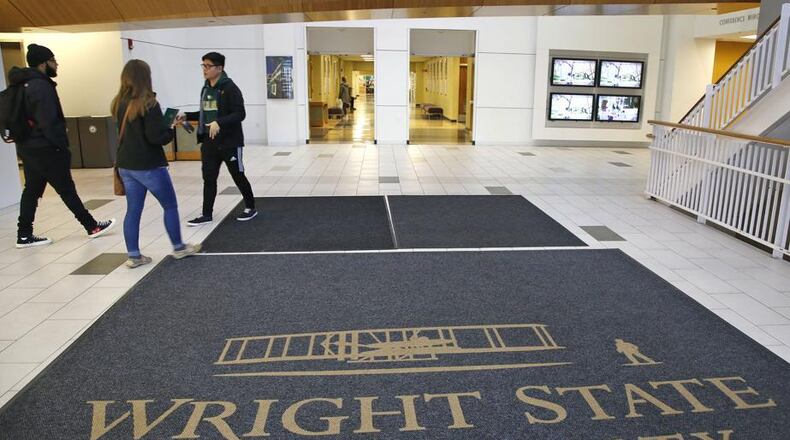And faculty members want precise numbers, their union president said. Mid-term contract talks have started with Wright State’s faculty and police unions.
Faculty members are dedicated to the institution, said Noeleen McIlvenna, president of the university’s faculty union, the AAUP (American Association of University Professors)-WSU. But faculty members need to see specifics in contract talks, she added.
“We’re going to require a lot more specifics of the budgeting and a lot more precision on it before we start bargaining anything away,” McIlvenna said Friday. “If it came to that, of course the university (faculty) would make sacrifices. They already have made sacrifices.”
As an example of an area she believes needs attention, she pointed to the $500,000 annual salary for Scott Nagy, Wright State’s men’s basketball coach, “by far the highest in the Horizon League,” McIlvenna said.
She said that when she raises Nagy’s salary with university representatives, they respond with a “stony silence.”
“Can we cut the stuff that’s not academic first?” McIlvenna said.
Nagy’s contract — when it was obtained by the Dayton Daily News through a public records request in 2016 — was for five years with an annual base salary of $500,000, which was more than double the $225,000 former coach Billy Donlon earned before being fired in March 2016.
A message seeking comment was sent to a university spokesman Friday, and the Dayton Daily News has asked Wright State officials about the extent of expected cuts.
Wright State was able to reduce a projected annual deficit of $11.5 million to about $1.5 million, with 45 days still to go in the budget year, university staff told trustees Friday.
RELATED: WSU president: 'Few choices' but to cut
Wright State in recent weeks has been able to put a brake on spending, said Greg Sample, Wright State’s chief operating officer.
In a meeting last month, Sample showed trustees a range of budget deficit projections from $11 million to $50 million, although Sample emphasized at the time that a $50 million deficit was not a real possibility.
On Friday, trustees saw a very different number.
“We effectively pulled a parking brake on the university’s spending as we were going down the road at 20 miles per hour,” Sample told trustees in a livestreamed meeting, an achievement he called “phenomenal.”
In fact, there’s a chance that could be turned into a “small surplus,” said Sommer Todd, the university’s fiscal services director.
And the goal before the university at the moment is to reduce spending from about $260 million a year to closer to $200 million by the year 2023, Sample said.
“Revenue is something we have to work on, too,” said Marty Grunder, a Wright State trustee.
“A confluence of declining enrollment projections and shrinking state support have left the university few choices but to pursue continued expense and workforce reductions so that Wright State can continue to serve the Dayton region and the state of Ohio,” Edwards said in her email Thursday.
About the Author

